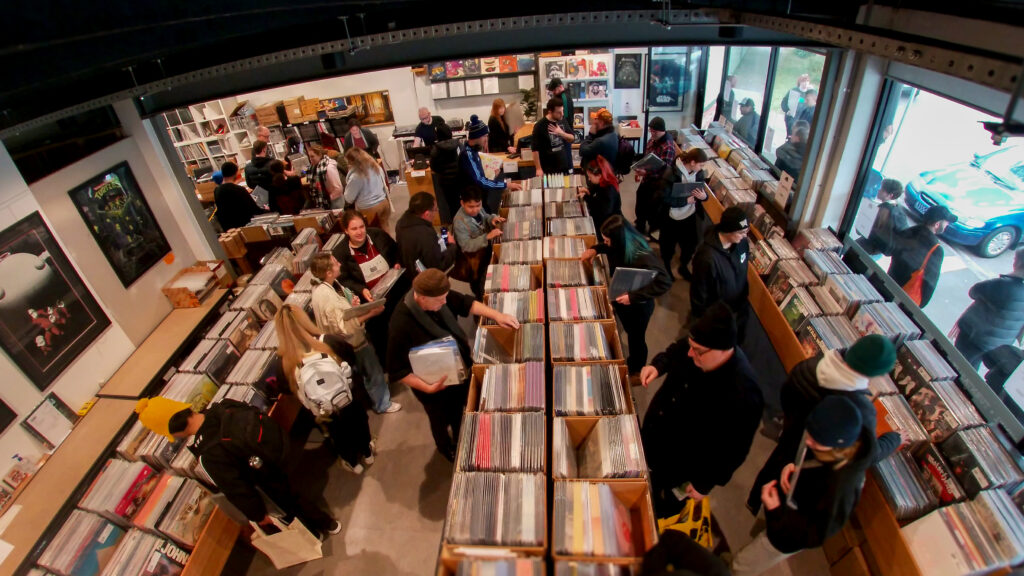“Ciscandra can scream with the best of them, don’t worry about that,” Roy begins on the toughness of his musical counterpart. “We don’t have any screamo songs but there are some points that it goes there. We’re hoping that the audience takes it in with a similar kind of intensity.”
Nostalghia is punk before it was punk: bohemian, DIY and a sponge to the sounds of the world. This two-piece are like a modern musical Shakti and Shiva – twin primal feminine and masculine energies destroying and re-creating music anew.
This ebb and flow is inspired by Ciscandra’s journey. Iranian by birth, Ciscandra was partially raised there before coming to California. She grew around her multicultural family: a Persian mother and Irish-Russian father fluent in French among many others. This rich stew of cultures bubble into Nostalghia’s intense music and performance. She seldom holds anything back. Audiences have found Nostalghia’s visceral outpouring of emotion compelling, oftentimes off-putting.
“For me, it’s never been uncomfortable,” Gnan counters. “I feed off of it. I find it attractive. That’s the kind of energy that I want to be involved with. It does make people uncomfortable, and I’ve heard that before. I don’t think she designed it that way, but I think she’d smile if she heard it did. She wants to make people feel something.”
Digging deeper is how Nostalghia operates, asking musical questions and not knowing what the answers are. Roy searches for sounds that aren’t part of the “traditional” musical canon.
“I look for sounds I can manipulate,” Gnan explains. “We take things and we Nostalghia-fy them. We might take a rough outline of a song and we give it the ‘Nostalghia treatment.’ We pull it back from the most obvious option. I have a very expensive and original sound library. I walk around with a little Digital Audio Tape recorder. If I hear something interesting, I’ll record it. I’ll layer five, six, seven sounds together and make it one sound. Ninety-five, ninety-nine percent of sounds in there are original sounds I’ve created. We always manipulate it to sound like us.
“People can listen to us and have no idea where those sounds came from,” Roy continues. “They might be using a lot of the same equipment but I’ll spend weeks finding the right one.”
They complement found sounds with harps, piano, electronic glitches, accordion, strings and a humble guitar. Roy’s stage setup sees him behind drums and electronics, juggling between the two.
“I’ve been doing it for a while now; my whole rig is connected,” Gnan explains. “I just have to prepare and keep my head straight. We used to have a much larger band with a string quartet. It was just too big and limiting. So we started downsizing.” With fewer on board, it was incumbent on Roy to plug up the sonic holes using new techniques.
“I come from a schooled jazz background,” Gnan says on his musical upbringing. “I got away from that quite a while ago and started exploring. I found my way into samplers and electronics. I have a bit of an obsessive personality so I started thinking, ‘What is possible with that stuff?'”
The jazz inside him coaxed Roy to improvise down to the nuts and bolts.
“It’s definitely translated into what we’re doing now,” Gnan says. “There’s a lot of crummily set-up stuff. I mean, you can write some good stuff by using the presets in the units. I just break everything apart. I take elements of it and push the boundaries of what the instruments can do.”
BY TOM VALCANIS







